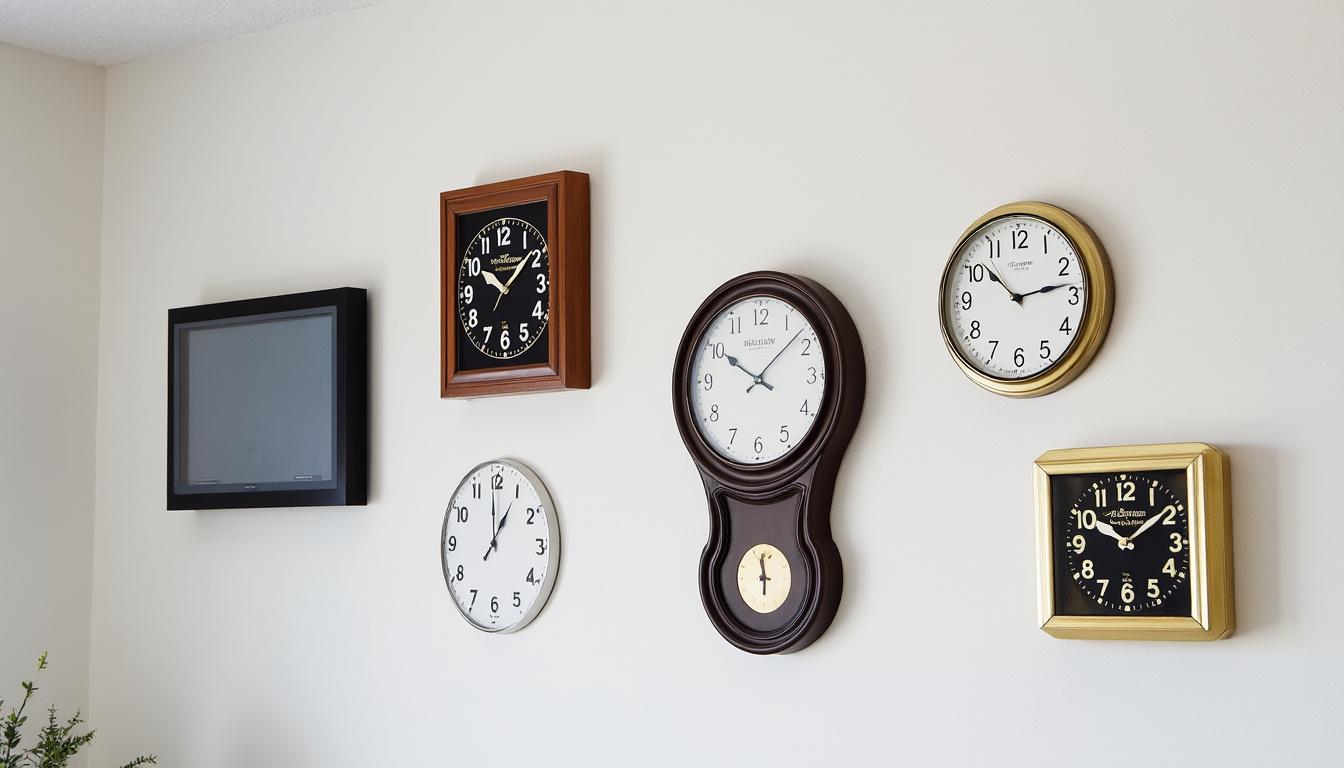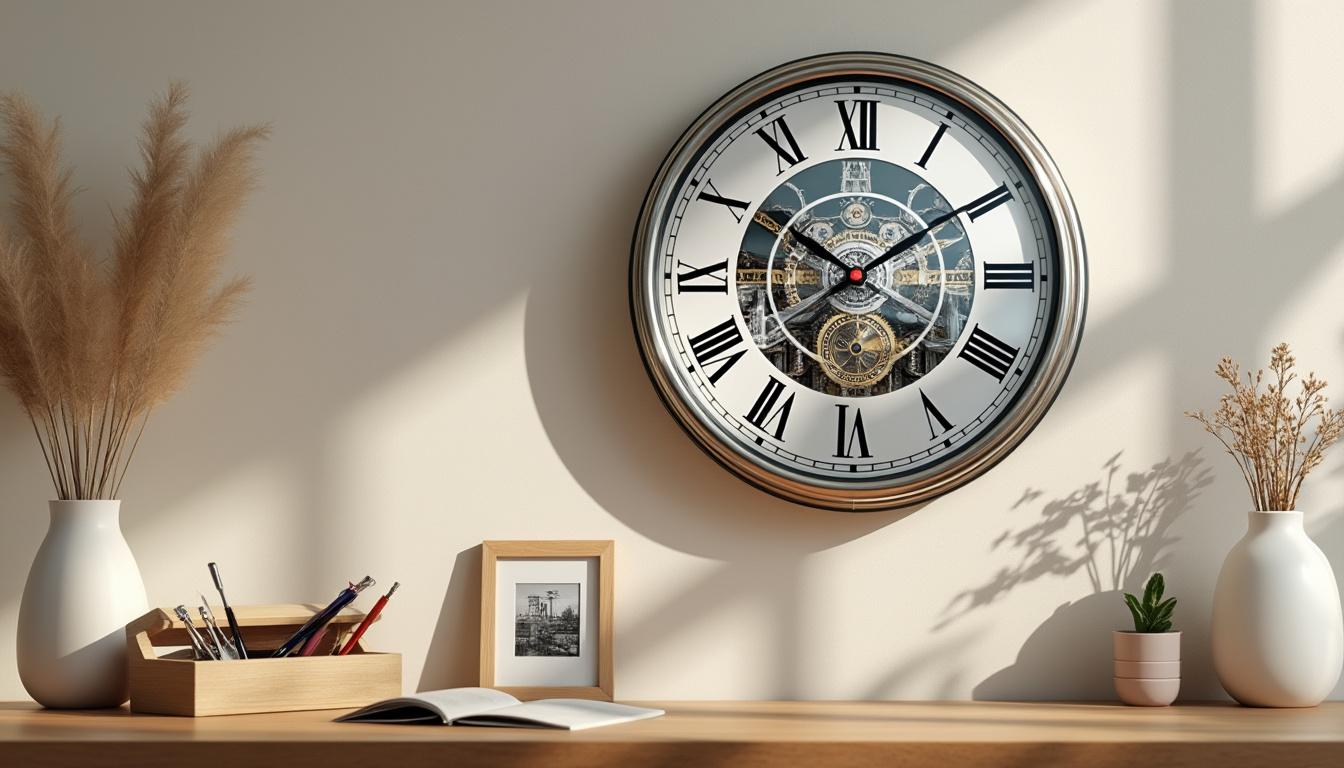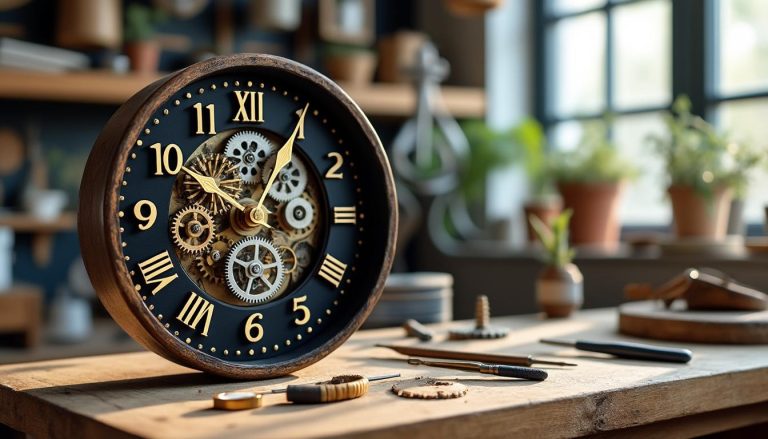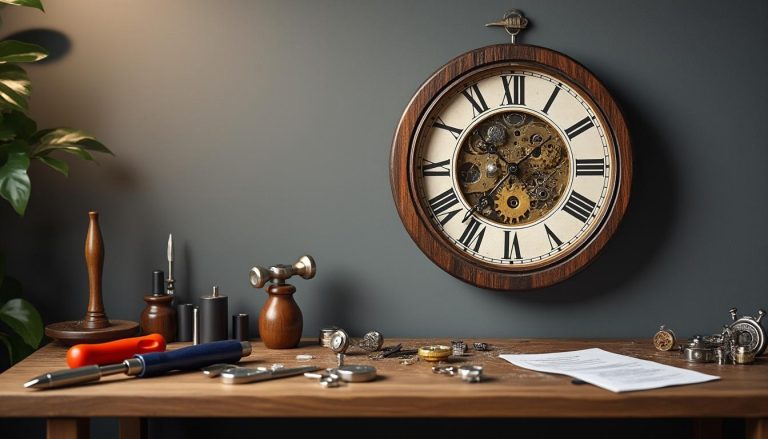A wall clock is more than just a time-telling device; it can be a stylish focal point in your home, office, or even a cozy nook in your cottage up north. But when it comes to setting it up right, many Canadians find themselves scratching their heads, especially with the variety of clocks available today – from classic Howard Miller pendulum clocks to atomic Casio models and vintage Seth Thomas pieces. Whether you’ve picked out a sleek Seiko for your living room or a functional Timex for your kitchen, knowing how to set a wall clock correctly ensures it works perfectly and complements your space. Let’s explore the ins and outs of setting wall clocks properly, making sure your timepiece keeps pace with your busy Canadian life, from Vancouver to Halifax.
Understanding Your Wall Clock: Types and Time Setting Basics ✅
Before diving into how to set a wall clock, it’s essential to understand the types of clocks you may have. In Canada, popular brands like Seiko, Citizen, and Bulova offer a range from straightforward quartz movements to sophisticated atomic clocks synced via radio signals. Setting these different clocks varies, so getting familiar with the mechanics will save you hassle.
There are generally three main types of wall clocks you might encounter:
- ⏰ Quartz Wall Clocks: Battery-operated, relying on a quartz crystal to keep time. Favoured for affordability and accuracy.
- 🕰️ Mechanical or Pendulum Clocks: Traditional clocks like those from Seth Thomas and Howard Miller. Require manual winding and careful handling.
- 📡 Atomic or Radio-Controlled Clocks: Synced automatically to Canadian time signals (often from the National Research Council in Ottawa), providing highly precise time.
Setting quartz clocks typically involves rotating a dial at the back to adjust the hands. Mechanical clocks might need you to wind a key or adjust weights, and atomic clocks often come with buttons or remote controls to fine-tune settings.
| Clock Type 🕒 | Setting Method 🔧 | Example Brands 🇨🇦 |
|---|---|---|
| Quartz | Rotate dial, change battery if needed | Seiko, Timex, Citizen |
| Mechanical | Winding key, pendulum setup | Howard Miller, Seth Thomas, Bulova |
| Atomic | Button press for sync, auto-update by radio signal | Casio, Sony, Bucherer |
Knowing your clock type is the first step in avoiding frustrating guesswork. For instance, a mechanical Howard Miller clock bought from a Toronto specialty shop will have a very different setup process than a Casio atomic clock from a Montréal department store.

Step-by-Step Guide to Setting Your Quartz and Mechanical Wall Clocks 🕑
Quartz and mechanical clocks remain popular in many Canadian homes thanks to their timeless appeal and reliability. Here’s how to set them up properly, focusing on these brands which are commonly found in Canadian stores like Hudson’s Bay or Canadian Tire.
Quartz Clocks – Simple and Accurate
Your first task should always be to check the battery. Weak or old batteries can cause your clock to stop or keep inaccurate time. Use fresh AA or AAA batteries, available readily at Canadian pharmacies and stores, for best results.
Once the battery is replaced or confirmed fresh, locate the time-setting dial which is usually on the back of the clock. Turn it gently in the direction indicated (usually clockwise) to set the correct time.
Keep these points in mind:
- 🔋 Replace batteries annually to avoid leakage damage.
- ⏳ Setting the time backwards can sometimes damage the movement; always follow brand-specific guidance.
- 📅 If your quartz clock includes a date function, ensure you adjust the date forwards, not back.
Mechanical Clocks – Winding and Pendulum Setup
Setting a mechanical clock like those from Howard Miller or Seth Thomas takes a little more patience. These clocks might need winding once a week using a key or pulling chains carefully.
Steps include:
- 🗝️ Insert the winding key into the holes on the clock face; one for timekeeping, others for chimes if applicable.
- ⏳ Turn the key until you feel resistance—stop before forcing the mechanism.
- 🔄 Adjust the hands only clockwise and close the glass door gently.
- 🕰️ Hang and gently start the pendulum swinging if your clock has one.
Remember, the ticks should be even and steady. Uneven ticking may require slight angle adjustment on the wall or pendulum fine-tuning.
| Step 🔢 | Quartz Clocks ⏳ | Mechanical Clocks 🕰️ |
|---|---|---|
| Battery | Replace annually 🔋 | Not applicable ❌ |
| Setting Time | Dial at back, clockwise only 🔄 | Winding key and hands only clockwise 🗝️ |
| Pendulum | None ❌ | Hang and start swinging gently 🔔 |
With a little attention, your mechanical clock may soon be chiming on the hour, adding that classic Canadian homey charm, especially in chilly winter evenings when you crave that nostalgic feel.
Setting Up Modern Atomic and Digital Wall Clocks: Precision for the Tech-Savvy Canadian⏱️
Atomic clocks have gained popularity in recent years thanks to their precision and the convenience of automatic updates synced with Canadian time signals. Brands like Casio, Sony, and Bucherer offer these clocks, perfect for busy urban homes in Toronto or Calgary where accuracy matters.
These models often come with features that can feel a bit tech-heavy, but setting them is straightforward once you get the hang of it:
- 📡 Automatic Synchronization: These clocks sync daily with the National Research Council (NRC) radio time signal based in Ottawa.
- 🔘 Manual Adjustment Buttons: Usually, there’s an M.SET button and a REC (receive) button to initiate manual syncing or set timezones.
- 🕰️ Daylight Saving Time: Most models automatically adjust, but double-check settings in spring and fall, especially given Canada’s recent DST legislation changes.
Manual setting steps for digital atomic clocks often go like this:
- ➡️ Press and hold the M.SET button for about 3 seconds to enter time setting mode.
- ⏳ Use short or long presses to advance minutes or hours as needed.
- ✔️ Confirm the time by either waiting for 8 seconds or pressing the REC button to sync.
| Feature ⚙️ | Atomic Clock Setting |
|---|---|
| Sync Method | Automatic daily radio signal from NRC 📡 |
| Manual Setting | M.SET and REC buttons, timed presses ⏳ |
| DST Adjustment | Automatic, check seasonally 🔄 |
Owning an atomic clock means you never have to manually reset your clock again, perfect for Canadians who travel across time zones or have packed schedules. These timepieces combine style from Bucherer or Sony with futuristic functionality.
Smart Wall Clocks and the Future of Timekeeping in Canadian Homes 🕒📱
The rise of smart home technology in Canada brings a new twist to wall clocks. Companies like Vitra and Citizen now offer smart wall clocks that connect with your home network, sync with your smartphone, and even display weather updates or notifications.
These clocks often pair with an app, making time setting almost effortless. However, proper setup is key to enjoy their full benefits:
- 📶 Ensure your clock is within range of your Wi-Fi network — common in Canadian homes using providers like Rogers or Bell.
- 📲 Download the manufacturer’s app (like Citizen Connect or Vitra Home) available on the App Store or Google Play.
- 🔌 Keep your clock plugged in or check that rechargeable batteries are charged, especially in remote areas like Northern Ontario where power reliability varies.
- 💡 Explore features beyond time — smart clocks may include alarms, timers, and integration with Alexa or Google Home.
The smart era allows Canadians to personalize how they track time, mixing convenience with modern lifestyle. From setting reminders for hockey games to timing cooking in the kitchen, these clocks keep pace with busy households across the provinces.
| Smart Clock Feature 🔔 | Benefit for Canadians 🇨🇦 |
|---|---|
| Wi-Fi Connectivity 📶 | Seamless syncing and updates throughout your home network |
| App Control 📲 | Easy setting adjustments from anywhere in the house or on the go |
| Multi-functionality 🛠️ | Weather, alarms, notifications tailored for your lifestyle |
| Energy Efficient 🔋 | Rechargeable or low-energy consumption suitable for eco-conscious users |
Smart clocks are increasingly seen in Canadian homes and offices, seamlessly bridging traditional timekeeping with today’s digital lifestyle.
Tips and Tricks to Maintain and Troubleshoot Wall Clocks Like a Pro 🛠️📅
Even the best clocks, from Timex vintage styles to cutting-edge atomic devices, need a bit of maintenance to keep ticking smoothly. If you’ve just set up your wall clock or inherited an antique Seth Thomas, these handy tips will help maintain accuracy and prevent common issues.
- 🔧 Battery Care: Change batteries annually or if you notice the clock stops suddenly.
- 🧹 Clean Regularly: Dust the face and mechanism with a soft cloth to avoid buildup, especially in Canadian homes with humidity variations.
- 🔔 Check Pendulum Swing: For mechanical clocks, ensure the pendulum swings evenly without interruption.
- ⚙️ Adjust Clock Position: Uneven hanging can cause timing inaccuracies; use a level to make sure the clock is straight on your wall.
- ⏰ Recalibrate as Needed: Adjust time yearly for Daylight Saving changes or when clocks run too fast or slow.
If you encounter unusual noises or your clock won’t keep time properly, consult the manufacturer’s manual or visit a specialty clock shop found in major Canadian cities like Vancouver, Calgary, or Montreal. Many also offer servicing for heritage brands like Bulova or Bucherer.
| Maintenance Tip 🔧 | Reason / Benefit 🌟 |
|---|---|
| Battery Replacement 🔋 | Prevents leakage and keeps clock running accurately |
| Dust Removal 🧹 | Improves mechanism performance and longevity |
| Pendulum Adjustment ⚖️ | Ensures even ticking and proper timekeeping |
| Level Hanging 🎯 | Avoids timing errors caused by uneven mounting |
Regular maintenance keeps your wall clock as reliable as the railway clocks that once coordinated Canadian train schedules, a tradition many Canadians admire.
FAQ
-
How often should I replace the batteries in my quartz wall clock?
Typically, once a year is recommended in Canadian climates to ensure continuous accurate timekeeping and to avoid battery leakage damage.
-
Does Daylight Saving Time change affect atomic clocks automatically?
Most atomic clocks sold in Canada today, including those by Casio and Sony, automatically adjust for Daylight Saving Time, but it’s wise to check settings after seasonal changes.
-
Can I hang a heavy Howard Miller mechanical clock on drywall without studs?
It’s best to secure heavy clocks on wall studs or use specialized wall anchors rated for the weight to avoid accidents.
-
Why is my mechanical clock ticking unevenly after hanging?
An uneven surface or incorrect pendulum alignment can cause this; use a level and gently adjust the pendulum until ticking sounds even.
-
Are smart wall clocks compatible with Canadian smart home systems?
Yes, many smart wall clocks from Vitra or Citizen sync well with common Canadian smart home platforms like Alexa or Google Home.



